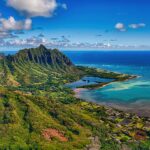Space is an awe-inspiring place filled with countless wonders, and one of its captivating phenomena is the presence of gas clouds known as nebulae. In this blog, we will delve into the intriguing world of nebulae, exploring their formation, types, and the significant role they play in the lifecycle of stars and the universe as a whole. Join us as we embark on a journey through the cosmos to unravel the mysteries of these celestial gas clouds.
- What are Nebulae? Nebulae are vast clouds of gas and dust that exist in space. They come in various shapes, sizes, and colors and are primarily composed of hydrogen, along with other elements and molecules.
- Formation of Nebulae: Nebulae are formed through several processes, including the remnants of supernova explosions, the gravitational collapse of interstellar gas clouds, and the stellar winds of massive stars. These processes lead to the condensation of gas and dust, giving birth to new nebulae.
- Types of Nebulae: a. Emission Nebulae: These nebulae are characterized by glowing, ionized gas that emits light of various colors. The famous Orion Nebula is an example of an emission nebula. b. Reflection Nebulae: These nebulae do not emit their own light but reflect the light of nearby stars, giving them a bluish appearance. c. Dark Nebulae: These dense clouds of gas and dust obscure the light from objects behind them, creating dark regions against the background.
- Stellar Nurseries: Nebulae are often referred to as stellar nurseries because they serve as the birthplace of new stars. The gravitational collapse of gas clouds within nebulae initiates the process of star formation.
- Protostars: Within nebulae, regions of dense gas and dust known as molecular clouds collapse under their own gravity, forming protostars. These protostars eventually evolve into fully-fledged stars.
- Planetary Nebulae: Towards the end of a star’s life, it goes through a phase where it sheds its outer layers, creating a colorful and intricate structure known as a planetary nebula. Despite the name, planetary nebulae have no connection to planets.
- Supernova Remnants: When massive stars reach the end of their lives, they explode in a catastrophic event known as a supernova. The remnants of these explosions, known as supernova remnants, contribute to the formation of new nebulae and enrich the interstellar medium.
- Nebulae as Stellar Feedback: Nebulae play a crucial role in the feedback mechanism of stars. The energy and material released by stars in the form of stellar winds and supernovae interact with the surrounding gas, influencing future star formation and the evolution of galaxies.
- The Pillars of Creation: One of the most iconic images captured by the Hubble Space Telescope is the “Pillars of Creation” in the Eagle Nebula. These towering columns of gas and dust provide a glimpse into the ongoing star formation process within the nebula.
- Nebulae as Cosmic Laboratories: Nebulae serve as valuable laboratories for studying various astrophysical processes. They provide insights into the formation and evolution of stars, the recycling of materials in galaxies, and the conditions necessary for the development of planetary systems.
- Spectacular Nebulae: Beyond their scientific importance, nebulae showcase the beauty and grandeur of the cosmos. The vibrant colors, intricate structures, and ethereal glow of nebulae have captivated astronomers and artists alike.
- Observing Nebulae: Ground-based telescopes and space observatories equipped with specialized instruments allow scientists to study nebulae in different wavelengths of light, revealing their composition, dynamics, and intricate details.
- Future Exploration: Upcoming space missions, such as the James Webb Space Telescope, promise to provide unprecedented insights into the formation and properties of nebulae. These advancements will revolutionize our understanding of these cosmic entities.
- Inspiring Wonder: Nebulae have a profound impact on our sense of wonder and curiosity about the universe. Their mesmerizing beauty inspires both scientists and the general public to explore the mysteries of space and expand our knowledge of the cosmos.
Conclusion: Nebulae are captivating and enigmatic gas clouds that play a significant role in the cosmic drama of star formation, stellar evolution, and the shaping of galaxies. Through their stunning visuals and scientific importance, nebulae ignite our imagination and drive our quest to unravel the secrets of the universe. As we continue to explore the cosmos, let us marvel at the magnificence of nebulae and appreciate their contribution to our understanding of the vastness and complexity of space.



















Add Comment